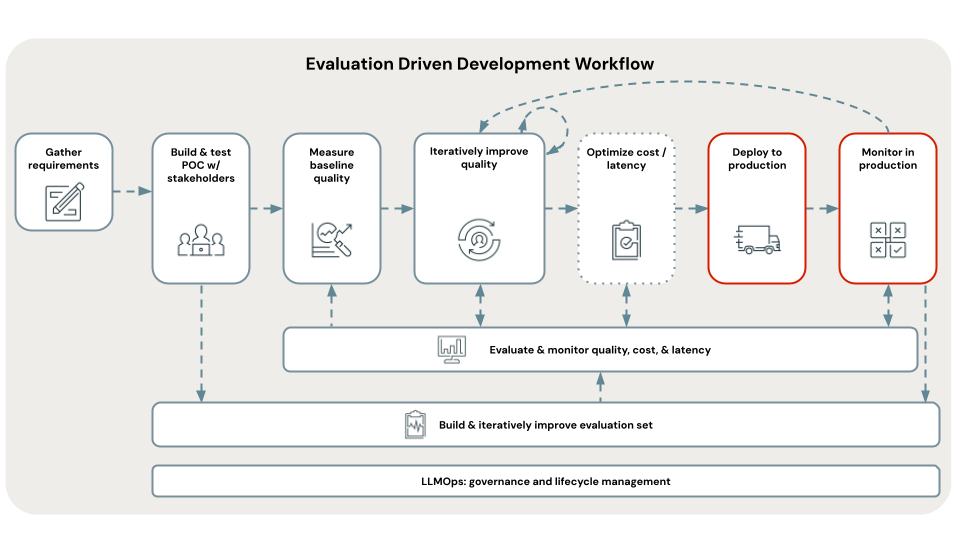Step 7. Deploy & monitor
This article provides high level guidance on how to deploy and monitor your proof of concept RAG application.

Now that you have built your RAG POC, evaluated it, and improved its quality, it’s time to deploy your RAG application to production. It is important to note that this does not mean that you are done monitoring performance and collecting feedback. Iterating on quality remains extremely important, even after deployment, as both data and usage patterns can change over time.
With Databricks, your chain is ready to deploy as-is using Mosaic AI Agent Serving. See Deploy an agent for generative AI application for instructions.
Deployment
Proper deployment is crucial for ensuring the smooth operation and success of your RAG solution. The following are critical considerations to keep in mind when deploying your RAG application:
- Identify key integration points
- Analyze your existing systems and workflows to determine where and how your RAG solution should integrate.
- Assess if certain integrations are more critical or complex than others, and prioritize accordingly.
- Implement versioning and scalability
- Set up a versioning system for your models to enable easy tracking and rollbacks.
- Design your deployment architecture to handle increasing loads and scale efficiently, leveraging tools like Databricks Model Serving.
- Ensure security and access control
- Follow security best practices when deploying your RAG solution, such as securing endpoints and protecting sensitive data.
- Implement proper access control mechanisms to ensure only authorized users can interact with your RAG solution.
Monitoring
Once you have deployed your RAG application, it is essential to monitor its performance. Real-world usage can reveal issues that may not have been apparent during earlier testing and evaluation. Furthermore, changing data and requirements can impact application performance over time. The following are important monitoring practices to follow:
- Establish monitoring metrics and logging
- Define key performance metrics to monitor the health and effectiveness of your RAG solution, such as accuracy, response times, and resource utilization.
- Implement comprehensive logging to capture important events, errors, and user interactions for debugging and improvement purposes.
- Set up alerts and feedback channels
- Configure alerts to notify you of anomalies or critical issues, allowing for proactive problem resolution.
- Provide channels for users to give feedback on the RAG solution and regularly review and address this feedback.
- Continuously monitor and improve
- Continuously analyze the performance of your RAG solution using the established monitoring metrics.
- Use insights gained from monitoring to drive iterative improvements and optimizations to your RAG solution.
- Conduct regular health checks
- Schedule regular health checks to proactively identify and address any potential issues before they impact users.
- Assess if certain components or integrations are more prone to issues and require closer monitoring.